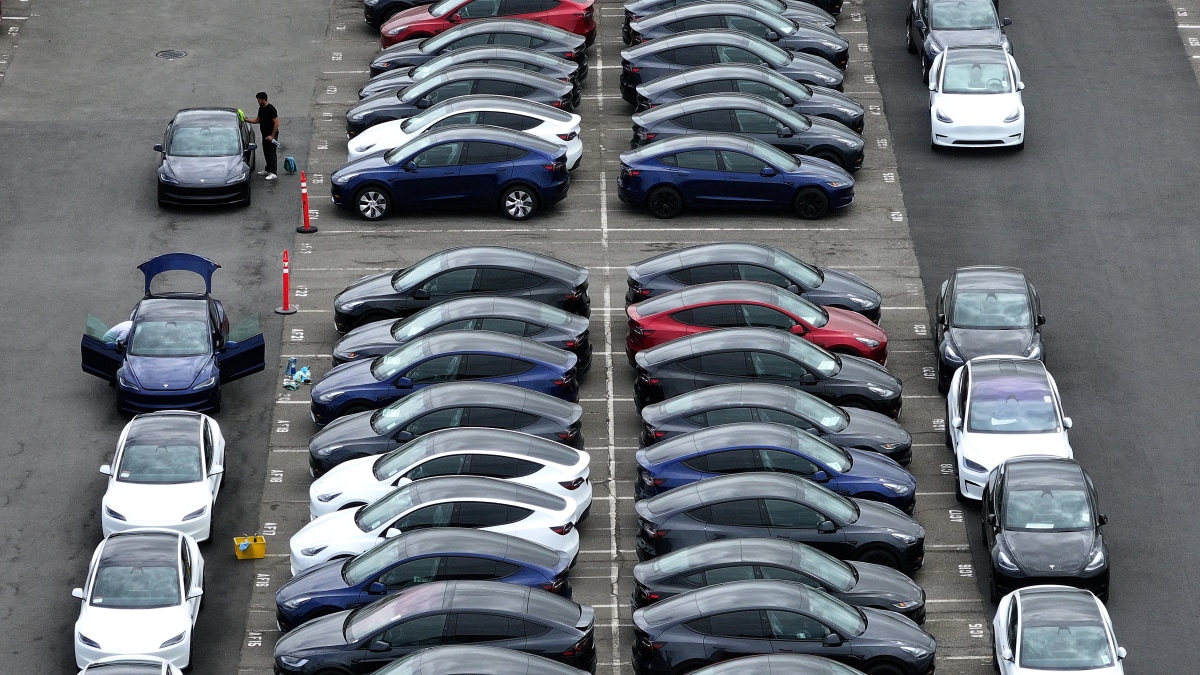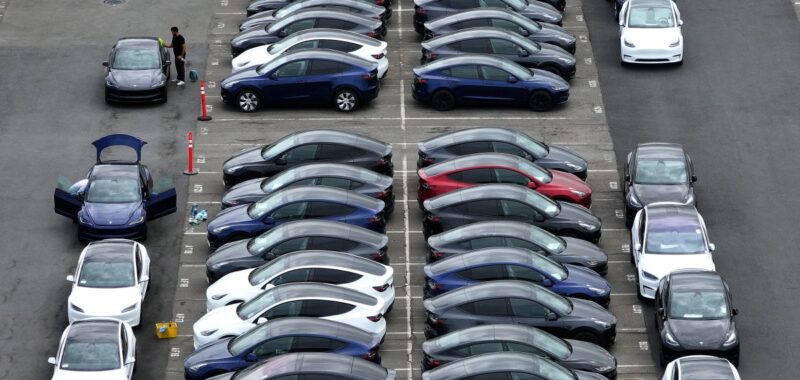
Tesla Inc.’s second consecutive drop in quarterly deliveries wasn’t as steep as analysts were predicting, sending the EV maker’s shares soaring as much as 10%.
The carmaker said Tuesday that it delivered 443,956 vehicles in the second quarter, better than the 439,302 average Wall Street estimate. While sales were down 4.8% from a year ago, Tesla improved on a sequential basis from the 386,810 vehicles delivered in the first three months of the year.
The company produced 410,831 vehicles during the quarter, 14% fewer than it made during the same period a year ago. Tesla didn’t offer an explanation for the dip in sales and output, but will provide more details when it reports earnings on July 23.
“We are encouraged by the strong deliveries and see this as a positive for the broader EV sentiment,” Ben Kallo, a senior research analyst at Robert W. Baird, said in a note.
Tesla has had a tumultuous year. Chief Executive Officer Elon Musk announced major staff reductions in April and pushed internally to reduce headcount by as much as a 20%. The job losses have included sales employees, which may have played a role in weaker delivery figures. The EV maker’s first new model in years, the Cybertruck, also has been slow to ramp up.
Tesla blamed its first-quarter slowdown on a suspected arson attack at its vehicle factory near Berlin, as well as shipping diversions from the Red Sea. While there were fewer external disruptions to the business during the last three months, the company is struggling to grow with an older lineup of vehicles.
Musk ordered price cuts across Tesla’s lineup over the past year and a half, but those measures haven’t done enough to sustain momentum. The Austin-based carmaker delivered 422,405 of its top-selling Model 3 and Model Y vehicles in the second quarter, down from 446,915 a year ago.
The company still hasn’t broken out sales for the Cybertruck, the pickup that it began delivering late last year. Two recall campaigns in June suggested Tesla has handed over more than 11,000 of the trucks to customers. During the company’s annual shareholder meeting last month, Musk said the automaker had produced 1,300 of the pickups in a week, though he didn’t specify when or speak to whether Tesla would maintain that pace.
In a note, Jessica Caldwell, head of insights at auto researcher Edmunds.com, said the delivery decline was not a big shock, and that “times are tough” for Tesla as the carmaker tries to attract buyers to its narrow product lineup in a slow EV market.
“We’ve seen the automaker exhaust its bag of tricks by lowering prices and increasing incentives to spur demand without much success in the U.S. market,” Caldwell said, adding the company’s limited lineup and the price of the Cybertruck are also making it hard to “nudge” shoppers toward its products.
Tesla did note a record in its energy storage business for the second quarter in a row. Tesla said it deployed around 9,400 megawatt hours during the last three months, up from 4,053 megawatt hours in the first quarter. This means that in just the first half of this year, the company almost topped its energy storage product deployments during all of 2023.
While the unit, which deploys Powerwall batteries for homes and Megapacks for commercial customers, has provided a glimmer of hope to Tesla amid a vehicle-sales decline, the challenge has been to convert those gains into meaningful revenue. The company usually brings in more sales from its “services and other” revenue segment than from energy generation and storage.
Musk has said Tesla will roll out new and more affordable models by early next year, though the company has provided few details beyond saying they’ll be produced on the same manufacturing lines as its current lineup. The CEO has also prioritized building a fully autonomous robotaxi and plans to hold an event to unveil the vehicle on Aug. 8.

